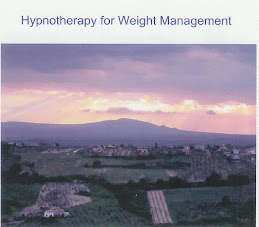The challenge cyclists face is that different types of races and even different points in a race require different levels of intensity. Sometimes you need to be really relaxed and other times you need to be in a full froth of adrenalin and aggression. How do you juggle and mix your psychological intensity?
The challenge for intensity in cycling is that different types of races and even different points in a race require different levels of intensity. Sometimes you need to be really relaxed, for example, during a long and flat stage, to conserve energy for an approaching climb. At other times, such as in a short criterium or during a sprint, you need really high intensity to generate power and speed.
PSYCH DOWN TOOLS
It's natural to feel some increase in your intensity before a race. You're putting yourself to the test and want to do your best. But when that intensity turns to anxiety that can hurt your performance, it can be a problem. Anxiety creates muscle tension, inhibits oxygen intake and just makes you feel physically uncomfortable, all of which will slow you down on your bike.
But rather than just resigning yourself to feeling nervous and having a bad ride, you can take active steps to reach and maintain your ideal intensity so you can ride your best. There are a number of simple psych-down techniques you can use to get your intensity back under control.
TAKE A DEEP BREATH
(See "Relaxation Breathing" in Older Posts at the bottom of this page for Correct and 'How To' Breathing Techniques - It Matters !!!)
When you experience over-intensity, one of the first things that's disrupted is your breathing. It becomes short and choppy and you don't get the oxygen your body needs. The most basic way to lower your intensity is to take control of your breathing by taking slow, deep breaths.
Deep breathing has several important benefits. It ensures that you get enough oxygen so your body can function well. By getting more oxygen into your body, you will relax, feel better have a greater sense of control. This increased comfort will give you more confidence and enable you to more easily combat negative thoughts (which are often the cause of the over-intensity).
It will also help you let go of negative emotions, such as fear or frustration, and allow you to regain positive emotions. Focusing on your breathing also acts to take your mind off of things that may be interfering and causing your over-intensity.
Taking conscious deep breaths before the start of a race is a simple and easy way to settle yourself down and prepare for the start. More deep breathing during races, for example, as you prepare for a climb, can also help you reach and maintain your ideal intensity.
MUSCLE RELAXATION
Muscle tension is another common symptom of over-intensity. This is the most crippling physical symptom because if your muscles are tight and stiff, you simply won't be able to ride at your highest level.
There are two muscle-relaxation techniques you can use before and during a training ride or race: passive and active relaxation. Similar to deep breathing, muscle relaxation is beneficial because it allows you to regain control of your body and makes you feel more comfortable physically. It also offers the same mental and emotional advantages as deep breathing.
Passive relaxation involves simply focusing on your muscles and allowing them to relax. Active relaxation is used when your body is very tense and you can't relax your muscles with passive relaxation. When your intensity is too high and your muscles are tight, it's difficult to just relax them. So instead of trying to relax your muscles, do just the opposite. Tighten them for five seconds, then relax them.
Active relaxation typically involves tightening and relaxing four major muscle groups: face and neck, arms and shoulders, chest and back, and buttocks and legs. It can also be individualized to focus on particular muscles that trouble you the most. The neck and shoulders seem to be the important muscle groups for cyclists because if those muscles are tight, your center of gravity rises and your power and stamina decreases.
LISTEN TO MUSIC
Music is one of the most common tools cyclists can use to control their intensity. We all know that music has a profound physical and emotional impact on us. Music has the ability to make us happy, sad, inspired and motivated. Music can also excite or relax us. Many professional cyclists listen to music before they compete to help them reach their ideal intensity.
Music is beneficial in several ways. It directly affects you physically. Calming music slows your breathing and relaxes your muscles. Mentally, it makes you feel positive and motivated. It also generates positive emotions such as joy and contentment.
A word of caution. Though listening to music through ear buds is increasingly common on the road these days, I don't recommend it. First, for obvious reasons, it can be dangerous because you won't hear an approaching car, a honk or a word of warning from a riding buddy.
Music can distract you from focusing on the quality of your ride. It can also prevent you from listening to the messages your body is sending you about exertion and pace.
SMILE
The last technique for lowering intensity is one of the strangest and most effective I've ever come across. A few years ago, I was working with a young professional cyclist who was having a terrible training ride. He was riding poorly and his coach was getting frustrated. He dropped back to me feeling angry and depressed, and his body was in knots. He asked me what he could do. I didn't have a good answer until an idea just popped into my head.
I told him to smile. He said, "I don't want to smile." I told him to smile. He said he was not happy and didn't want to smile. I told him again to smile. This time, just to get me off his back, he smiled. I told him to hold the smile.
During the next two minutes there was an amazing transformation. As he rode along with the smile on his face, the tension began to drain out of his body. His breathing became slow and deep. He said that he was feeling better. In a short time, he was looking more relaxed and happier. He returned to his training pace, his riding improved, and he made some progress during the remainder of ride.
His response was so dramatic that I wanted to learn how such a change could occur. When I returned to my office, I looked at the research related to smiling and learned two things.
First, as we grow up, we become conditioned to the positive effects of smiling. In other words, we learn that when we smile, it means we're happy and life is good. Second, there's been some fascinating research looking at the effects of smiling on our brain chemistry.
What this research has found is that when we smile, it releases brain chemicals called endorphins which have an actual physiologically relaxing effect.
PSYCH-UP TOOLS
Though less common than over-intensity, letdowns in intensity can also cause your level of riding to decline. A decrease in intensity causes all the things that enable you to cycle well to disappear.
Physically, you no longer have the blood flow, oxygen and adrenaline necessary for the strength and stamina you need to ride your best. Mentally, you lose the motivation and focus that enables you to cycle well. Just like psych-down tools when your intensity is too high, you can use psych-up tools to raise your intensity when it drops.
ACTIVE.COM
http://bit.ly/1519fU0
ABOUT THE AUTHOR
JIM TAYLOR
PezCycling News: We tap into what's cool in elite level pro cycling and make the news fun again--every day. Check out our off-beat rider interviews, top level tech reviews, weekly training & fitness articles, cool stories on top rides, race news and reports the way we like 'em, the lovely Daily Distractions and cool stories you can't find anywhere else. Get Pez'd today.





















